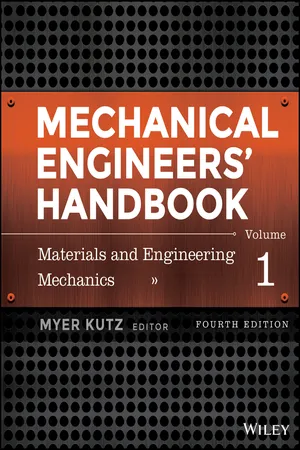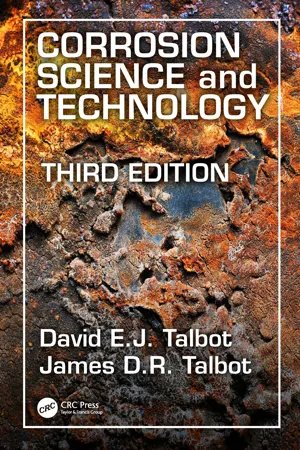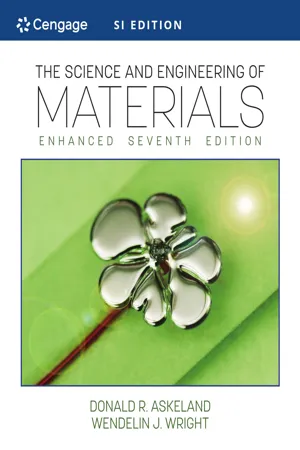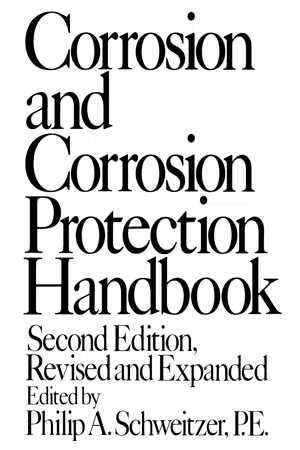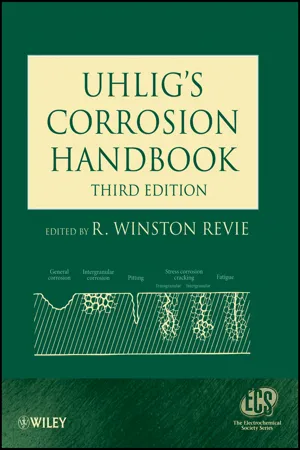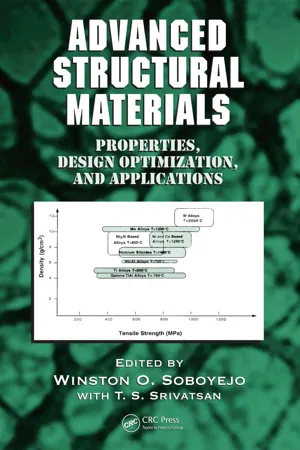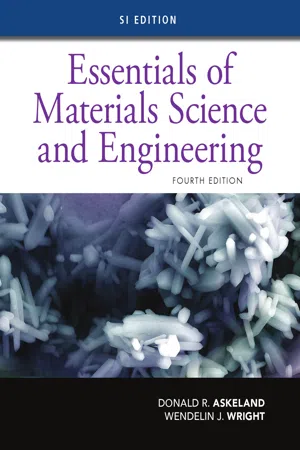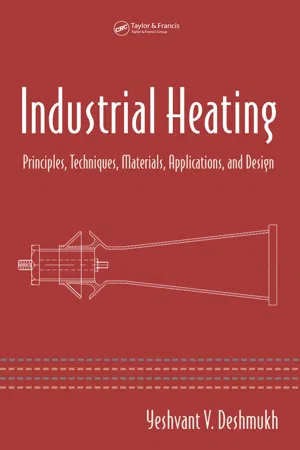Technology & Engineering
Nickel Alloys
Nickel alloys are metallic materials that contain nickel as the primary element, often combined with other metals such as chromium, iron, or copper. These alloys are known for their exceptional resistance to corrosion, high-temperature strength, and excellent performance in extreme environments. They are widely used in various industries, including aerospace, chemical processing, and marine engineering, due to their unique combination of properties.
Written by Perlego with AI-assistance
Related key terms
1 of 5
12 Key excerpts on "Nickel Alloys"
- eBook - ePub
Mechanical Engineers' Handbook, Volume 1
Materials and Engineering Mechanics
- Myer Kutz(Author)
- 2015(Publication Date)
- Wiley(Publisher)
Of importance for aqueous reducing acids, oxidizing chloride environments, and seawater are alloy 625 and alloy C-276, which contain 9 and 16% molybdenum, respectively, and are among the most resistant alloys currently available. Low-level titanium and aluminum additions provide V strengthening while retaining good corrosion resistance, as in alloy X-750. Cobalt and other alloying element additions provide jet engine materials (superalloys) that combine high-temperature strength with resistance to gaseous oxidation and sulfidation.Another technologically important group of materials are the higher iron alloys, which were originally developed to conserve nickel and are often regarded as intermediate in performance and cost between Nickel Alloys and stainless steels. The prototype, alloy 800 (Fe– 33% Ni–21% Cr), is a general-purpose alloy with good high-temperature strength and resistance to steam and oxidizing or carburizing gases. Alloying with molybdenum and chromium, as in alloy 825 and alloy G, improves resistance to reducing acids and localized corrosion in chlorides.Another important category is the nickel–copper alloys. At the higher nickel end are the Monel alloys (30–45% Cu, balance Ni) used for corrosive chemicals such as hydrofluoric acid and severe marine environments. At the higher copper end are the cupronickels (10– 30% Ni, balance Cu), which are widely used for marine applications because of their fouling resistance.Nickel Alloys exhibit high resistance to attack under nitriding conditions (e.g., in dissociated ammonia) and in chlorine or chloride gases. Corrosion in the latter at elevated temperatures proceeds by the formation and volatilization of chloride scales, and high-nickel contents are beneficial since nickel forms one of the least volatile chlorides. Conversely, in sulfidizing environments, high-Nickel Alloys without chromium can exhibit attack due to the formation of a low-melting-point Ni–Ni3 Si2 eutectic. However, high chromium contents appear to limit this form of attack.Friend explains corrosion reactions as wet or dry (Ref. 10, pp. 3–5):The term wet corrosion usually refers to all forms of corrosive attack by aqueous solutions of electrolytes, which can range from pure water (a weak electrolyte) to aqueous solutions of acids or bases or of their salts, including neutral salts. It also includes natural environments such as the atmosphere, natural waters, soils, and others, irrespective of whether the metal is in contact with a condensed film or droplets of moisture or is completely immersed. Corrosion by aqueous environments is electrochemical in nature, assuming the presence of anodic and cathodic areas on the surface of the metal even though these areas may be so small as to be indistinguishable by experimental methods and the distance between them may be only of atomic dimensions. - eBook - PDF
Materials Technology NQF3 SB
TVET FIRST
- Business Programme Development (PTY) Ltd(Author)
- 2013(Publication Date)
- Macmillan(Publisher)
Nickel is a versatile element and will alloy with most metals. Nickel and Nickel Alloys are used for a wide variety of applications. Most applications involve corrosion resistance, heat resistance and electrical resistance. Some of these include: • aircraft gas turbines • steam turbine power plants • medical applications • nuclear power systems • chemical and petrochemical industries. • Heat resistance: Nickel Alloys are used in many applications where they are subjected to harsh environments at high temperatures. • Corrosion resistance: Nickel Alloys offer excellent corrosion resistance to a wide range of corrosive media. • Electrical resistance: This property allows Nickel Alloys to be used in instruments and control equipment to measure and regulate electrical characteristics. Figure 3.7 Nickel has been used in alloys that date back to the dawn of civilisation In 1889 James Riley of Glasgow published a research paper on the effect of adding nickel to steel. The US Navy tested armour plate of nickel steel and found that it was better than ordinary steel plate. Since then, nickel steels have been used in the manufacture of vehicle and aircraft parts where high strength is needed. Nickel cast iron was first used in 1925. The nickel gave the cast iron increased hardness, strength and resistance to wear as well as good machinability. Nickel is usually added in amounts less than 3% although sometimes higher amounts are added to give extra hardness and corrosion resistance. These alloys are used in mining equipment where high strength is needed. An alloy composed of iron with 36% nickel has the property of expanding only to a very small extent when changes in its temperature occur. Metals expand when heated which is why expansion gaps are left between railway lines. One way of illustrating this is as follows: • If a tape made of aluminium were laid for a distance of 145 km it would expand by about 3 m when the temperature rose by 1 C. - eBook - ePub
- David E.J. Talbot, James D.R. Talbot(Authors)
- 2018(Publication Date)
- CRC Press(Publisher)
Nickel forms extensive solid solutions in binary systems with other passivating metals including copper, chromium, iron, molybdenum and cobalt, which form the basis of most alloys. Compositions of interest lie within the solid solution phase fields of the binary systems, but most alloys are multicomponent formulations and contain additional components selected from aluminium, titanium, tantalum, niobium and carbon that may be added to enhance resistance to corrosion or oxidation or to improve mechanical properties. Such constitutions are often too complex to represent in simple phase equilibrium diagrams.Nickel Alloys are of two different kinds:1.Alloys for general corrosion resistance in aggressive chemical engineering, industrial and marine environments, which are essentially solid solutions with simple structures designed to passivate in prescribed media.2.Customized alloys for blades and associated components operating at high temperatures in gas turbines for aircraft and marine propulsion, known as superalloys . They are complex highly specialized alloys, some consisting of as many as ten components, with chemical compositions and controlled microstructures designed to maintain mechanical stability and chemical integrity in the unique environments of gas turbine flames derived from aviation or marine fuels and air ingested from prevailing ambient atmospheres.11.2.1Nickel Alloys for General Corrosion ResistanceAlloys for chemical engineering, marine and allied applications have evolved by progressive improvements based on information accumulated from service experience and plant and laboratory corrosion tests. Tables 11.1 and 11.2 list compositions for some representative alloys and corresponding mechanical properties typical of the many registered formulations available. The properties are comparable with those of carbon steels.The list includes alloys that can be matched to applications in acidic, alkaline or neutral aqueous media, including hydrochloric acid, for wide ranges of compositions and temperature, and to reactive gases including chlorine, hydrogen chloride and fluorine. The selection of a reliable and economic alloy for any particular application is usually guided by experience and confirmed by extensive experimental and plant tests because the conditions in which they must serve are often too complex and variable to predict in advance. Environmental factors that must be considered include pH, temperature, speciation, prevailing redox potentials and degree of aeration, all of which may vary in the course of process sequences in chemical or related industries. Other factors may also be important such as acceptable metallic contamination of material in process. - Donald Askeland, Wendelin Wright, Donald Askeland(Authors)
- 2020(Publication Date)
- Cengage Learning EMEA(Publisher)
● Nickel and cobalt alloys, including superalloys, provide good properties at even higher temperatures. Combined with their good corrosion resistance, these alloys find many applications in aircraft engines and chemical processing equipment. Glossary Bioactive A material that is not rejected by the human body and eventually becomes part of the body (e.g., hydroxyapatite). Biocompatible A material that is not rejected by the human body. Blister copper An impure form of copper obtained during the copper refining process. Brass A group of copper-based alloys, normally containing zinc as the major alloying element. Bronze Generally, copper alloys containing tin, but can contain other elements. Castability The ease with which a metal can be poured into a mold to make a casting without producing defects or requiring unusual or expensive techniques to prevent casting problems. Fluidity The ability of liquid metal to fill a mold cavity without prematurely freezing. Monel The copper-nickel alloy, containing approximately 60% Ni, that gives the maximum strength in the binary alloy system. Nonferrous alloy An alloy based on some metal other than iron. Refractory metals Metals having a melting temperature above 1925°C. Specific strength The ratio of strength to density. Also called the strength-to-weight ratio. Superalloys A group of nickel, iron-nickel, and cobalt-based alloys that have exceptional heat resistance, creep resistance, and corrosion resistance. Copyright 2022 Cengage Learning. All Rights Reserved. May not be copied, scanned, or duplicated, in whole or in part. Due to electronic rights, some third party content may be suppressed from the eBook and/or eChapter(s). Editorial review has deemed that any suppressed content does not materially affect the overall learning experience. Cengage Learning reserves the right to remove additional content at any time if subsequent rights restrictions require it.- eBook - PDF
Metallurgical Achievements
Selection of Papers Presented at the Birmingham Metallurgical Society's Diamond Jubilee Session, 1963-1964
- W. O. Alexander(Author)
- 2013(Publication Date)
- Pergamon(Publisher)
SOME HIGHLIGHTS IN THE USE OF NICKEL IN NICKEL-BASE ALLOYS AND IN STEELS E. J. BRADBURY Development and Research Department, The International Nickel Co. (Mond) Ltd. SEVERAL of the outstanding developments in nickel-containing materials are dealt with in other papers in this series; thus, H. W. G. Hignett has reviewed the role of nickel in high temperature alloys and F. S. Pickering has surveyed recent progress in high strength steels. In order to avoid repetition, aspects covered by other authors will be referred to only briefly in the present paper. Although nickel was isolated as an element in 1751, it is only during the present century that the major applications of the metal have been fully appreciated. Recent years have seen many advances, both in the improve-ment of well established materials and in the exploration and practical utilization of some nickel-alloy systems not previously investigated. To qualify for inclusion in this symposium, a new alloy must have shown a decided advance over existing materials, in one or more of the physical, chemical or mechanical properties required for a given application. On the basis of that qualification, it seems logical to classify the subject under three headings: materials showing significant improvements in— 1. Strength. 2. Physical properties. 3. Corrosion resistance. In certain cases the new materials discussed merit inclusion under more than one of these headings. 1. MATERIALS SHOWING I M P R O V E D S T R E N G T H Requirements for strength at low, ambient and high temperature can rarely be satisfied by a single material, particularly if cost is taken into account. Attempts to satisfy engineers' demands for higher strength in these three temperature ranges have therefore led to development of specific alloys for each temperature range. - eBook - ePub
- Schweitzer(Author)
- 2017(Publication Date)
- Routledge(Publisher)
7Nickel and High Nickel Alloys N. Sridhar Heynes International, Inc., Kokomo, Indiana F. Galen Hodge Heynes International, Inc., Kokomo, IndianaIntroduction
No class of alloys shows as wide a range of applications as the Ni-based alloys. These alloys are used as corrosion-resistant alloys, heating elements, controlled expansion alloys, creep-resistant alloys in turbines and jet engines, and high-temperature corrosion-resistant alloys. What makes this array of applications possible is not only the electrochemical properties of nickel but also its crystallographic characteristics that enable it to accommodate large amounts of alloying elements that, in turn, lend these alloys their unique properties. This chapter will be devoted to the alloys developed mainly for their corrosion resistance. These alloys are mainly solid-solution-strengthened alloys supplied in the fully annealed condition. However, some precipitation hardenable Ni-based alloys will also be discussed where their corrosion properties are of importance. The purpose overall will be to present the strengths and weaknesses of these alloys and their areas of application. Discussion of corrosion mechanisms and physical metallurgy will be kept to a minimum. However, references, which elaborate the physical metallurgy and corrosion mechanisms, are cited under each alloy category.The element nickel is nobler than iron but more active than copper in the electrochemical series. In reducing environments, such as dilute sulfuric acid, nickel is more corrosion-resistant than iron but not as resistant as copper or nickel-copper alloys. The nickel-molybdenum alloys are more corrosion-resistant to reducing acids than nickel or Ni-Cu alloys. Nickel can form a protective, passive film in some environments and, hence, exhibit moderate corrosion resistance. However, the passive film is not particularly stable and, hence, nickel cannot generally be used in oxidizing environments such as nitric acid. Alloying with chromium can result in a much more stable passive film and corrosion resistance to a variety of oxidizing environments. However, the nickel-chromium alloys can corrode in environments containing appreciable amounts of chloride or other halides, especially if oxidizing species are present. The form of corrosion will be pitting. Alloying with molybdenum and tungsten is necessary to improve the resistance to corrosion by oxidizing chloride solutions. - eBook - ePub
- R. Winston Revie(Author)
- 2011(Publication Date)
- Wiley(Publisher)
2 S >260°C, by oxygen or air > 540°C, and by nitrogen > 980°C. The new technologies of thermal destruction of hazardous and municipal waste, fluidized-bed combustion, coal gasification and chemicals from coal processes, and the use of “dirty feedstock,” such as heavy oil and high sulfur coal, coupled with demands for higher efficiency and tougher environmental regulations, have necessitated the use of higher alloy systems of iron-, nickel-, and cobalt-base alloys. Alloy systems must provide reliable and safe performance in a cost-effective manner but must also have sufficient versatility to resist changing corrosive conditions due to feedstock changes. The property requirements in materials of construction for high-temperature applications can be classified under mechanical and high-temperature corrosion resistance as follows:
Requirements will vary for different industries, such as aerospace, heat treating, power generation, and chemical/petrochemical processing.Mechanical Properties Corrosion Resistance Properties High-temperature strength Oxidation Stress rupture strength Carburization Creep strength Nitriding Fatigue strength Sulfidation Thermal stability Halogenation Thermal shock resistance Molten salt Toughness Liquid metal Other specific properties Ash salt deposit Others In nickel-base alloys, the major elements for imparting specific properties or a combination of properties are chromium, silicon, aluminum, titanium, molybdenum, cobalt, tungsten, and carbon. Others, such as yttrium and rare earths, niobium, tantalum, and zirconium, play very specific roles in improving certain high-temperature corrosion characteristics. These alloying elements can also be classified as follows:
References [10, 39–42] provide detailed information on high-temperature alloy systems. NoteProtective scale formers Cr as Cr2 O3 , Al as Al2 O3 , Si as SiO2 Solid-solution strengtheners Mo, W, Nb, Ti, Cr, Co Age-hardening strengtheners Al + Ti, Al, Ti, Nb, Ta Carbide strengtheners Cr, Mo, W, Ti, Zr, Ta, Nb Improved scale adhesion (spallation resistance) Rare earths (La, Ce) Y, Hf, Zr, Ta 1. Deceased.References1. Bulletin CEB-2 “Corrosion Resistance of Nickle and Nickle-Containing Alloys in Caustic Soda and Other Alkalies,” International Nickle Co., Inc., Huntington, WV, 1973.2. D. C. Agarwal, U. Heubner, M. Koehler,and W. Herda, Mater. Perform. , 33 (10), 64 (1994).3. - eBook - PDF
- Ulrich Heubner(Author)
- 2000(Publication Date)
- CRC Press(Publisher)
5 Use and working of Nickel Alloys in chemical plant construction and in environmental technology R. Koecher 5.1 Introduction Nickel and Nickel Alloys have received extensive and varied use in chemical plant construction and environmental technology because of their good mechani cal properties and their good resistance in acidic and basic aggressive media. Composite materials with nickel alloy cladding offer numerous material and prop erty combinations to equipment and plant designers. Clad components also of fer technical and economic advantages for numerous duty conditions compared to solid designs. In environmental technology (flue gas desulphurisation), Nickel Alloys have been successfully used to a considerable extent as well as special stainless steels. Absorber plants are constructed in solid designs as well as in clad plate. Lining with thin sheets (wallpaper technique) is the preferred method in refurbishment work. The descriptions below give some general and specific fabrication details that enable a significant improvement in the quality of fabrica tion to be achieved. 5.2 Nickel Alloys in chemical plants The advances in welding have substantially improved fabrication methods and the fabrication quality of apparatus made from nickel-base materials. Shown in Figures 5.1 and 5.2 are some components of relatively simple design. Setting aside the necessity for ensuring that the hot forming, heat treatment and pretreatment techniques are suitable for welding the semi-finished parts, this equipment does not nowadays make any particularly great demands on the equip ment fabricator. Nickel-base alloys of the type NiCrl 5Fe/Alloy 600(2.4816) have good weldability. Optimum welding conditions must be used and extensive non destructive testing (surface crack detection by means of dye penetrant test, ra diographic examination) performed where high weld quality is required. - eBook - PDF
Advanced Structural Materials
Properties, Design Optimization, and Applications
- Winston O. Soboyejo, T.S. Srivatsan, Winston O. Soboyejo, T.S. Srivatsan(Authors)
- 2006(Publication Date)
- CRC Press(Publisher)
14 Nickel-Base Alloys W. O. Soboyejo Department of Mechanical and Aerospace Engineering, Princeton Institute for the Science and Technology of Materials (PRISM), Princeton University CONTENTS 14.1 Introduction ........................................................................................................................ 475 14.2 Introduction to Nickel and Nickel Alloys ......................................................................... 476 14.3 Ni–Cu Alloys ...................................................................................................................... 477 14.4 Ni–Cr Alloys ...................................................................................................................... 479 14.5 Ni–Fe–Cr Alloys ................................................................................................................ 480 14.6 Nickel-Base Superalloys .................................................................................................... 481 14.7 Fatigue and Fracture of Nickel-Base Superalloys ............................................................. 484 14.8 The Future Beyond Nickel-Base Superalloys .................................................................... 490 14.9 Summary and Concluding Remarks .................................................................................. 491 References ..................................................................................................................................... 491 14.1 INTRODUCTION Nickel-base alloys are currently the materials of choice for structural applications at intermedia-te/high temperatures between w 500 8 C and 1100 8 C. This is due largely to their attractive combinations of strength, ductility, fracture toughness, hot corrosion resistance, creep resistance, and high temperature oxidation resistance. - Donald Askeland, Wendelin Wright(Authors)
- 2018(Publication Date)
- Cengage Learning EMEA(Publisher)
A Ni-36% Fe alloy (Invar) displays practically no expansion during heating; this effect is exploited in producing bimetallic composite materials. Cobalt is used in WC-Co cutting tools. Nickel and Monel Nickel and its alloys have excellent corrosion resistance and forming characteristics. When copper is added to nickel, the maximum strength is obtained near 60% Ni. A number of alloys, called Monels , with approximately this composition are used for their strength and corrosion resistance in salt water and at elevated temperatures. Some of the Monels contain small amounts of aluminum and titanium. These alloys show an age-hardening response by the precipitation of g 9 , a coherent Ni 3 Al or Ni 3 Ti precipitate that nearly doubles the tensile strengths. The precipitates resist overaging at temperatures up to 425°C (Figure 14-6). Superalloys Superalloys are nickel, iron-nickel, and cobalt alloys that contain large amounts of alloying elements intended to produce a combination of high strength at elevated temperatures, resistance to creep at temperatures up to 1000°C, and resistance to corrosion.- eBook - PDF
- William F. Hosford(Author)
- 2010(Publication Date)
- CRC Press(Publisher)
(From Copper and Copper Alloys , ASM Specialty Handbook , p. 347, ASM International, Materials Park, OH, 2001. With permission.) Copper and Nickel Alloys 219 Such exposure could, for example, occur during torch welding. The formation of H 2 O in the form of steam causes embrittlement. 13.8 NICKEL-BASED ALLOYS Nickel has an fcc crystal structure. Its melting point is 145°C and its density is 8.9. Its main uses are in the chemical industry for its corrosion resistance, for heat-resisting alloys including the super alloys and for magnetic alloys. Relatively pure Ni, with or without small amounts of Mn, Al, and Si, has very good corrosion resistance in air and seawater. The oxidation resistance is lowered by sulfur. Monel contains 67% Ni and 33% Cu, which is approximately the Ni/Cu ratio in Sudbury Ontario deposits. It finds widespread use because of its corrosion resistance. The solubility of chromium is over 30% as shown in Figure 13.25. Chromium additions provide oxidation resistance at elevated temperatures. Nickel–chromium alloys are widely used for electrical heating elements. These contain typically 20% Cr and 1.2–2% Si with or without smaller amounts of Fe and Al. These are used for furnace windings up to 1200°C as well as for toaster. Figure 13.26 shows the tempera-ture dependence of resistivity for a number of Ni–Cr alloys. Nichrome is a trade name. Ni-base superalloys are alloys used for service at temperatures in the range of 1500–2000°F (800–1100°C) in jet engines and power-generating turbines. Figure 12.27 compares these alloys with other superalloys. Among the alloys are Waspalloy, Udimet 500 and 700, and René 41. These are all nickel-base alloys with 13–20% Cr, 10–18% Co, and 2–5% Al and/or Ti. Their microstructures consist of g¢ , Ni 3 (Al, Ti), FIGURE 13.25 Nickel–chromium phase diagram. Chromium has a great solubility in the fcc lattice of nickel. - eBook - PDF
Industrial Heating
Principles, Techniques, Materials, Applications, and Design
- Yeshvant V. Deshmukh(Author)
- 2005(Publication Date)
- CRC Press(Publisher)
Hence, they find major applications in ovens for baking, etc. Metals and Alloys for High Temperature Applications 353 10. Nickel and nickel chromium alloys dominate the temper-ature range from 600 to 1100 ° C and are the costliest. They offer several advantages if properly fabricated and used and thereby prove economical. There are many alloys based on Ni and Cr. They contain small amounts of aluminum, titanium, molybdenum, and balance iron. Most of these alloys are proprietary and are recom-mended for individual situations. The alloys are available in all forms such as rod, plate, sheet, wire, and tube. They can be easily welded. They have austenitic, single-phase structure. Some of the alloys can be hardened by disper-sion or solution strengthening. Some alloys offer excellent resistance to process gases and molten salts. The properties of some Nickel Alloys frequently used in high temperature furnaces are given in Table 8.6. There are many other heat-resistant alloys used in machinery such as boilers, turbines, jet and automotive engines, etc. These are not considered here. 11. Beyond about 1200 ° C, the only metals available are refractory metals — tungsten, molybdenum, and tan-talum. They are very costly compared to Nickel Alloys. Their availability is limited to simple shapes such as sheets, rods, and wires. They oxidize easily beyond about 600 ° C and have to be protected by spe-cial gases, or inert gases, or vacuum. At tempera-tures beyond 1200 ° C they have low strength. The maximum useful temperature when properly pro-tected are tungsten–2560 ° C, molybdenum–1900 ° C, and tantalum–2400 ° C. Their main use is in radiation shields, resistors, furnace tubes, boats, crucibles, etc. For processing high purity metals as in semicon-ductor manufacture, platinum or platinum alloys are used up to 1600–1700 ° C. They are extremely costly but can be used in air and are easy to fabricate. 12. Metals have high specific heat and conductivity.
Index pages curate the most relevant extracts from our library of academic textbooks. They’ve been created using an in-house natural language model (NLM), each adding context and meaning to key research topics.
